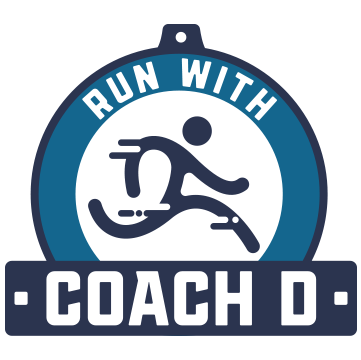Why am I Doing This: Base Building
You may balk at the idea of it when you see it on your training schedule for 3-5 weeks, but base building is a vital part of training for any race distance. This is the phase of training designed to get you trained to train; without it you’re sacrificing potential gains and increasing the potential for injury.
I know, it’s not sexy. The amount of slow miles ahead of you is like watching paint dry, but by understanding why it’s important I’m hoping I can give you that spark to get out and hit those slow miles.
Builds Aerobic Efficiency:
Believe it or not, your base phase sets up the harder training (Intervals, Fartleks, Marathon Pace, ect…) down the road by getting your body shifted towards being aerobic. Basically you’re creating a new you…one that’s better adapted to harder workouts by being more efficient at taking in and using oxygen. Your base phase does this early on by increasing the amount of red blood in your blood and increasing the amount of blood your left ventricle can pump out. Basically, you get better at moving blood to where you need it.
Over time, you also grow more capillaries (small mesh of veins that feed blood to your muscle cells), increase the amount and size of the power plants (called mitochondria) in your muscle cells, and even create more aerobic-friendly enzymes to make the whole process work. This is why base training over time; month over month, year over year, is so important. It takes time to become an aerobic machine.
Improves your Durability
The more slow miles you run, the more injury resilient you’ll be. Pretty simple right?
Runners get injured pretty frequently (30-75% annually), mostly from running too much, too fast, too early. Base training lets your body prepare for more intense or longer running sessions by giving it just enough of a demand to change (grow muscles, strengthen tendons and ligaments, and harden bones) but not so much that you can’t recover between sessions. Over the course of your base phase, you’ll increase demand by running more or introducing hills (like hill strides or sprints) to build more strength and stress.
This is also the point in training where I tend to program more core and leg strength for my athletes. Because you’re not as beat up from running, you’ll have more bandwidth to handle strength training.
Improve your Ability to Burn Fat and Grows Glycogen Stores
When you’re keeping things easy your body prioritizes burning fats over carbohydrates. So when you run easy, you’re burning mostly fats. But as the run progresses or get faster you get closer to your aerobic threshold and start burning more carbs to meet your anaerobic energy demands. That's why slow is the way to go in this phase. The other piece to this is the long run you typically get in base training. For more advanced runners, going 90+ min means depleting your glycogen (carbohydrate stores in muscles) to the point of using fats as a primary energy source. When you do this consistently over time, your body responds by increasing the amount of glycogen your body can store.
Improves Your Ability to Recruit and use Fast-Twitch Fibers
We have fast and slow twitch muscles, as you probably already know. But it’s not as cut and dry as that dichotomy implies…we have the ability to use both our fast twitch and slow twitch muscles for running fast or slow. Our body doesn't just shut one muscle type off while the other works, it uses them simultaneously but at different proportions relative to what you’re doing. When you run slow, your fast twitch muscles are working too, just not as much. But when you do your long runs and reach a certain level of fatigue, your fast twitch fibers cycle back in to take some of the load. This pushes them to be more aerobic (creates more and larger mitochondria, more aerobic enzymes in the muscle cell, ect…) so they can be more aerobic on future runs.
Builds your Mental Toughness
Running’s hard, but doing it makes it easier to bear. That’s the main take away from base training. The more miles you run for longer makes it easier to go out and run a long time. We get better at managing the “suck” of running. This in turn builds your ability to endure hard miles in your harder workouts or even on race day. Your body can manage way more pain than you know, it’s your mind you need to convince to keep going.

